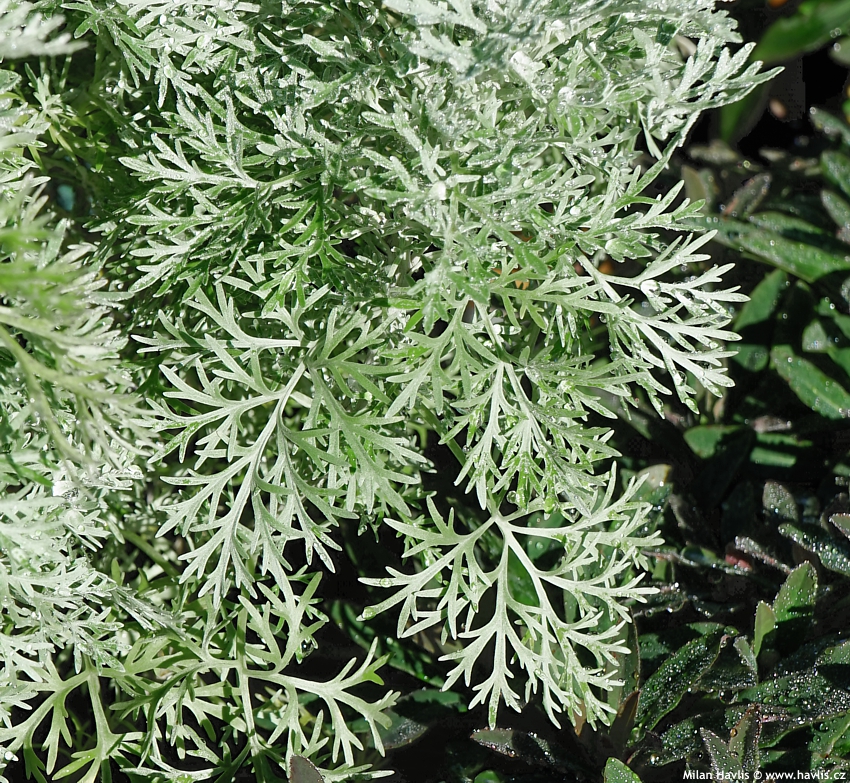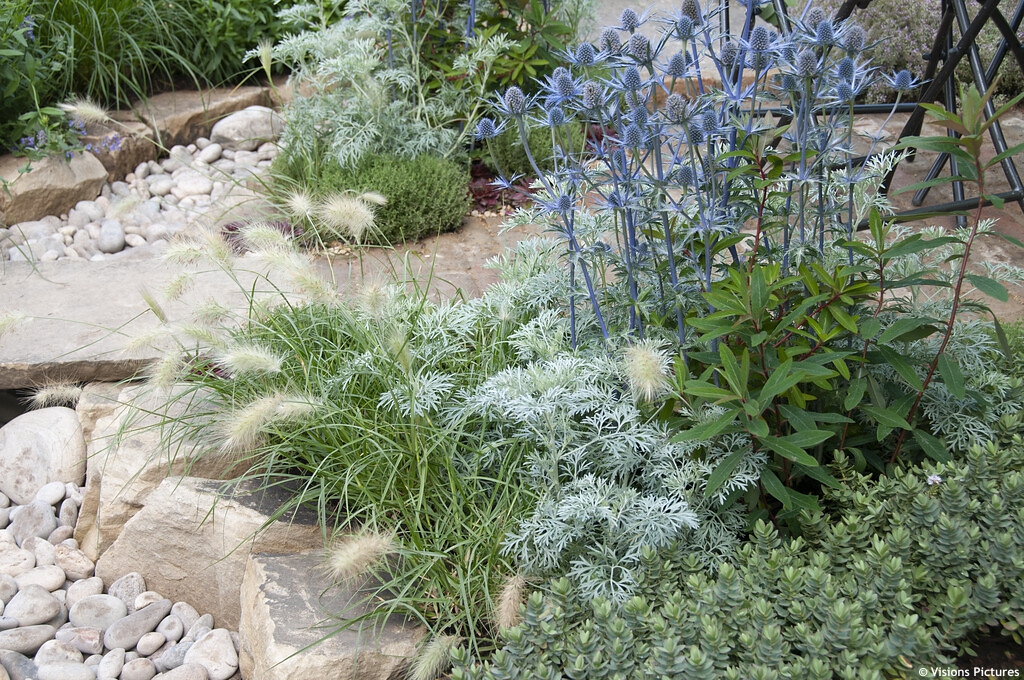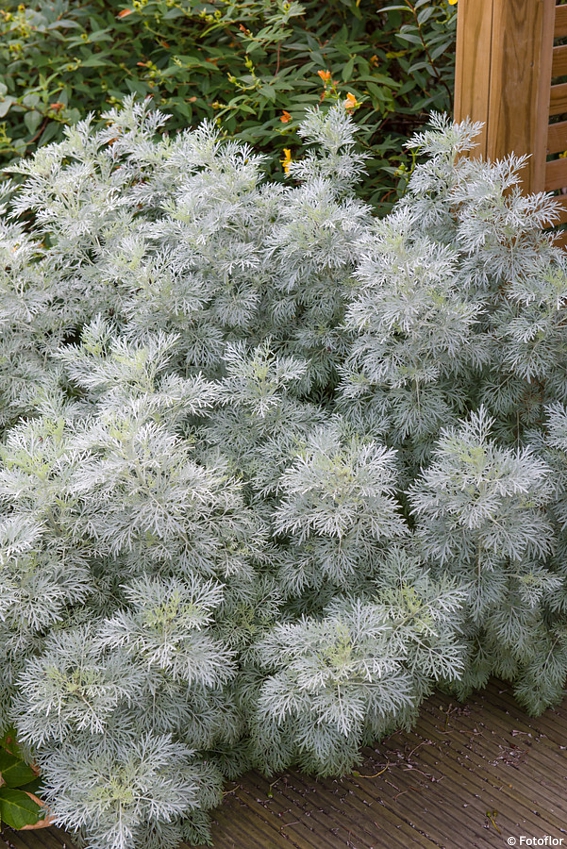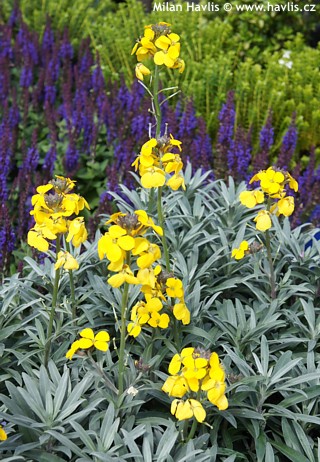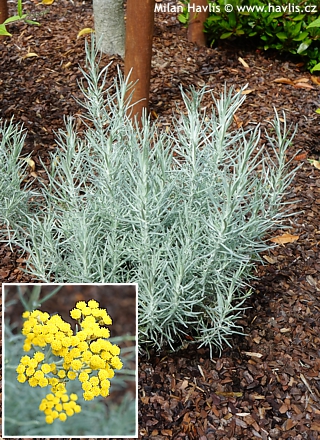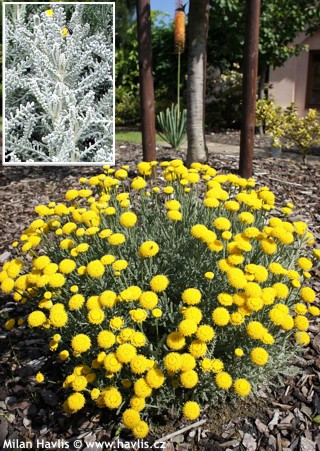Artemisia 'POWIS CASTLE' wormwood


Artemisia
Artemisia has several names, none of which sounds very attractive: mugwort, sagebrush or even wormwood. Now choose one. It is a large genus of predominantly evergreen (but also deciduous) shrubs, perennials, and annuals from the Northern Hemisphere, with several species from the Mediterranean, North Africa, and South America. These are plants resistant to heat, drought, poor soils, salt spray, and even fire to a certain extent. They are cultivated mainly for highly attractive, silvery foliage that is often finely lobed or delicately dissected. The leaves are evergreen and contain fragrant oils, whose aroma is very strong and unattractive to not only humans - thanks to their fragrance wormwood has almost no pests. One wormwood species is used for production of an alcoholic drink - a. absinthium, I suppose you will never guess which one …It is an evergreen, semi-woody perennial with beautiful, deeply dissected, lace-like, light blue green to silvery leaves which contrast perfectly with any other greenery in the perennial beds. In late summer appear small yellow flowers which are best removed leaving only the leaves stand out. It grows slowly and forms fluffy, dense clumps or subshrubs of a variable size between 40 and 80 cm (both tall and wide). The variety was awarded AGM by the British Royal Horticultural Society, and a renowned perennial expert Allan Armitage (* 1946), a professor at the University of Georgia in the USA, considers it one of the finest perennials ever.
It is used in prairie landscapes with grasses, coneflowers, sea hollies and similar plants. It is also popular in casual perennial beds where it helps separate plants of similar colour. In my opinion, it looks magnificent in xeriscape along with choisya, yucca, aromatic perennial herbs (savory, rosemary, thyme), etc., and being evergreen it is well suited as a differently colored, softening accent in evergreen borders with leathery leaves.
Semi-woody wormwood requires sunny places and light, free-draining soil - it will most likely die in wet ground or heavy clay. Stay away from fertilizing as it may become short-lived. It performs better in poor soils. Regular pruning is not needed but older plants benefit from a careful rejuvenating. Under good conditions it hardy to at least -24 °C (USDA zone 6).
Last update 24-11-2021
Goods are shipped all over Europe. For Russia and U.K. and for further details please read about SHIPPING OPTIONS HERE.
Are you interested in a serious discount for orders NOV-FEB? Check your options here.
THE PRICES INCLUDE VAT of 15%. For quick conversion you can use 1 CZK = approx. 0.04 EUR
- STANDARD QUALITY - Plants of this group are 1st class quality with number of branches and overall density adequate to their size and age, considering they were container grown.
- DE LUXE QUALITY - This label guarantees a luxurious quality of manually selected plants that, compared to their height and age, are exceptionally dense and beautiful.
- EXTRA - These plants are usually mature and bigger specimens with exceptional overall appearance.
- STANDARD (as described in the plant form) means a tree with a trunk of 190-210 cm and a crown at the top, unless specified differently. The commercial size for trees is their girth measured in the height of 1m from ground.
- HOBBY - These plants are of the same quality as our standard-quality plants but younger and therefore cheaper.
- SHRUB - a woody plant with branches growing bushy from the ground level.
- HALF-STANDARD or MINI-STANDARD - a small tree with shorter trunk, its size is usually specified.
- FEATHERED - These are trees with branches growing already from the base of the trunk and up along the stem.
- GRASSES and PERENNIALS - Sizes given usually read the diameter of the pot or the clump, as specified.













